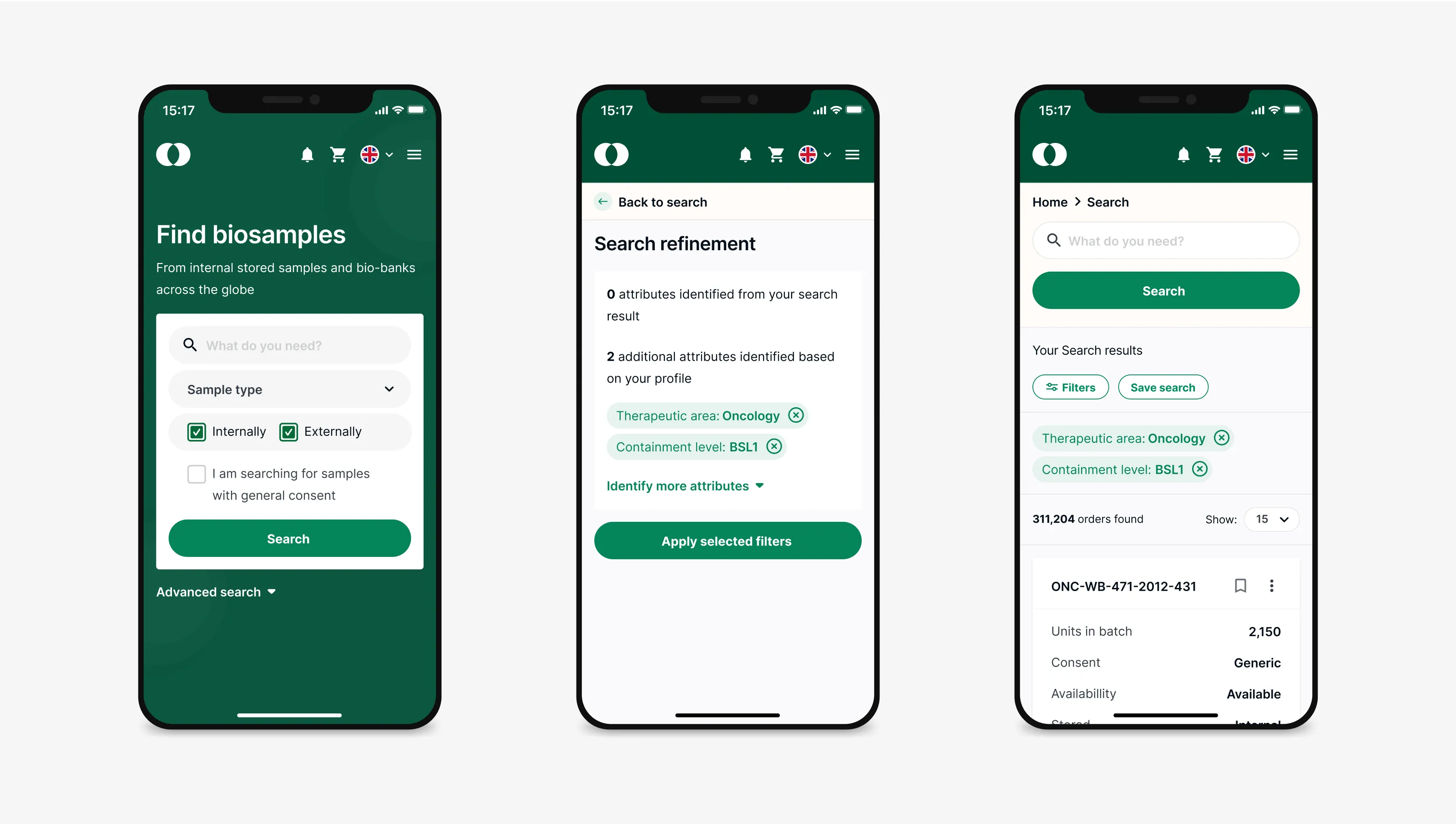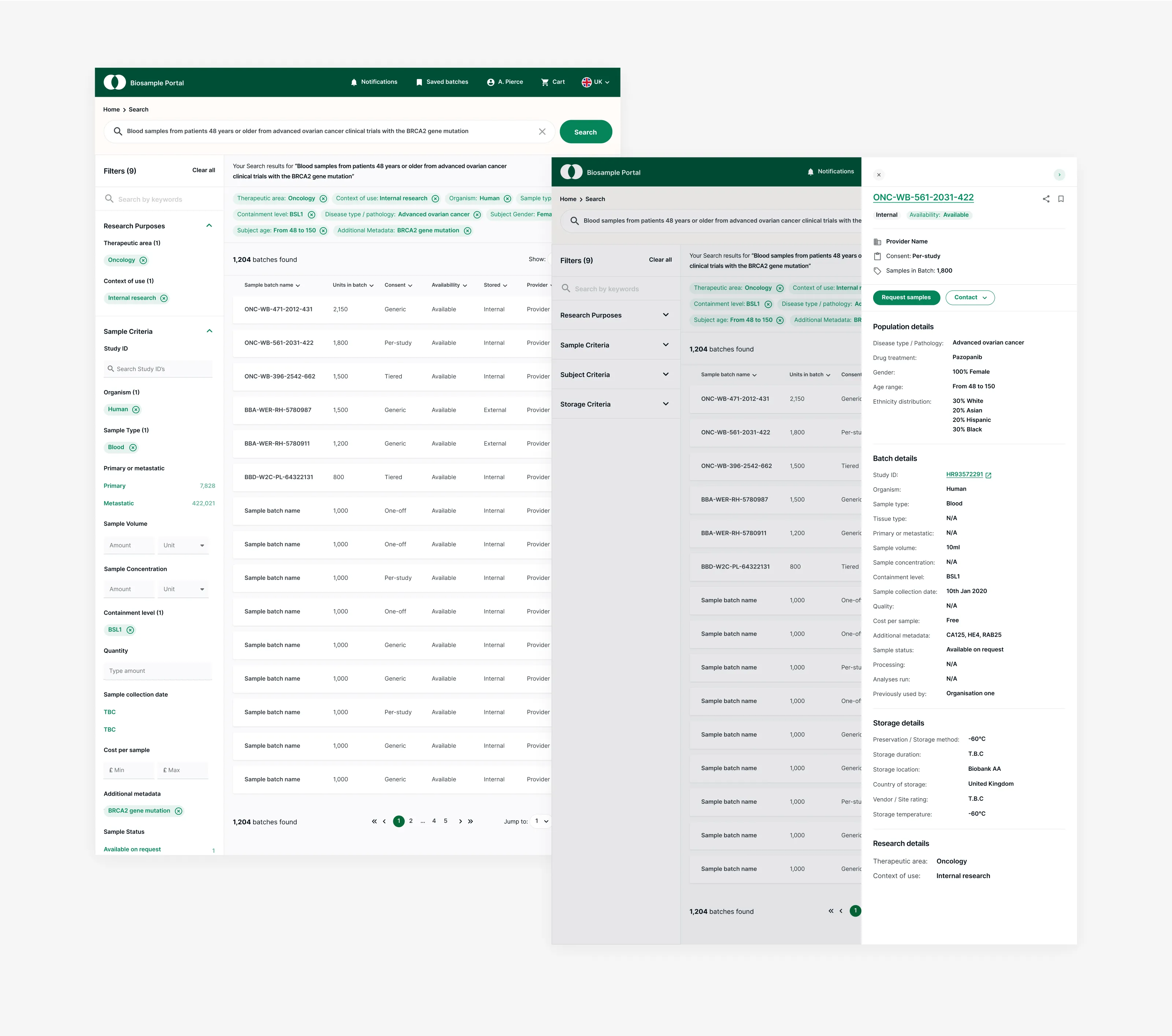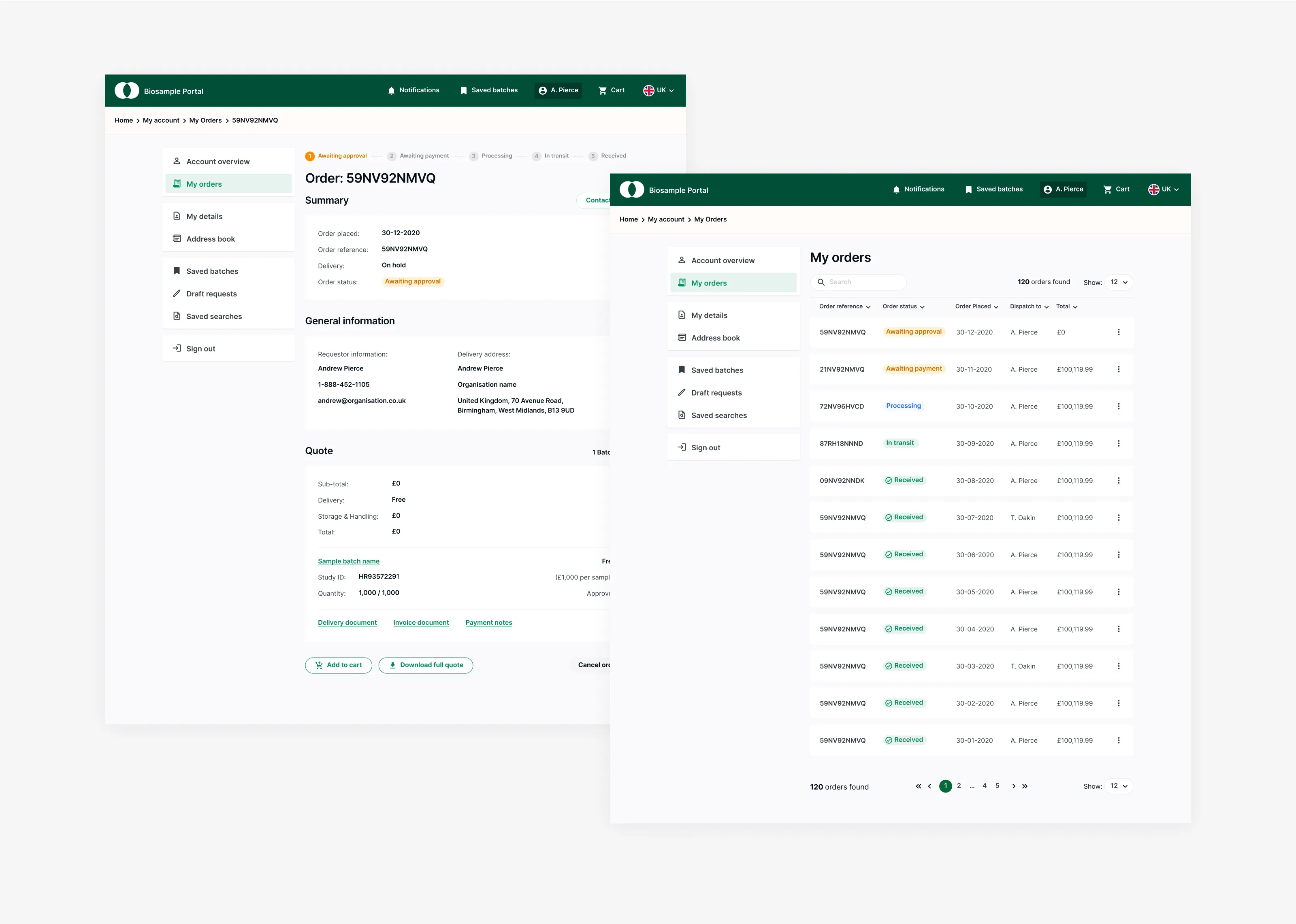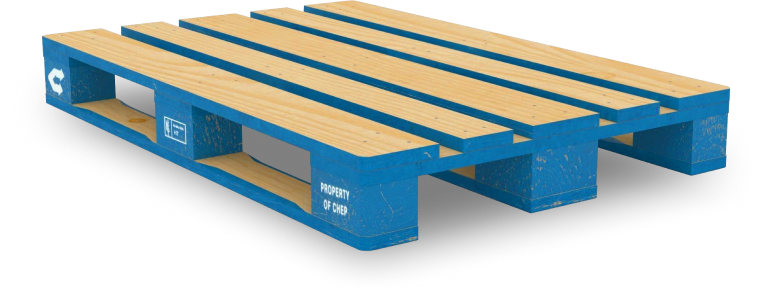Information architecture anchored in scientist workflows
Design navigation and filters around sample type, condition, and source, mirroring scientific categorisation. This aligned with mental models and reduced friction in search.
Guided filtering and progressive disclosure
Prioritise common filters upfront, defer advanced parameters into expandable controls. This prevented overwhelming new users while preserving depth for advanced searches.
Metadata clarity and trust
Surface provenance, condition, and availability clearly in results; use consistent visual language for sample states. This built trust and reduced wasted time requesting unusable samples.
Request flow integration
Connect discovery to request, approval, and fulfilment within the same platform. This reduced drop-off and ensuresd continuity of workflow.
Prototyping to support scope
Produce responsive prototypes to visualise user journeys end-to-end. This gave stakeholders concrete artefacts to discuss scope, feasibility, and priorities.




